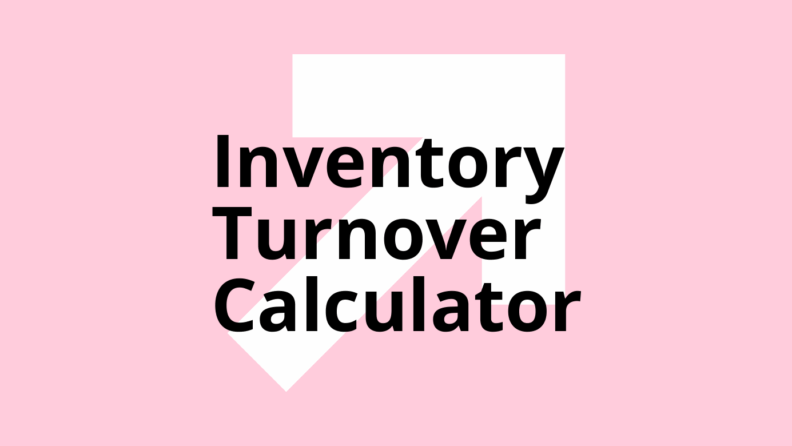Inventory turnover is one of the clearest measures of how efficiently you’re moving products. A healthy turnover means you’re selling through stock regularly without overstocking.
A lagging turnover means you might be tying up too much cash in inventory that isn’t moving.
This calculator shows your turnover ratio so you can decide whether to change purchasing patterns, pricing, or promotions.
How to Use This Inventory Turnover Calculator
- Enter your cost of goods sold (COGS) for the year—the total cost of products you actually sold.
- Enter your average inventory value for the same period.
- Click Calculate Turnover.
- Review your turnover ratio to see how often you sold through your inventory in that time frame.
- Compare results to industry norms and track changes over time.
Inventory Turnover Formula Explained
Inventory Turnover = Cost of Goods Sold ÷ Average Inventory
- COGS. The total cost of all products sold in the period.
- Average inventory. (Beginning inventory + Ending inventory) ÷ 2.
A higher turnover ratio usually means you’re converting inventory to sales quickly. A lower ratio might point to overbuying, low demand, or slow-moving products.
Inventory Turnover Example
You sold $500,000 worth of goods this year. Your average inventory value was $100,000.
| Variable | Value |
|---|---|
| COGS | 500,000 |
| Avg. inventory | 100,000 |
| Turnover | 5.0 |
That means you sold through your inventory five times in the year.
Pro Tips to Boost Inventory Turnover
Before you buy more software, tighten the fundamentals:
- Refine demand forecasts. Buy only what you can realistically sell in your forecast window.
- Review SKUs quarterly. Drop slow movers or bundle them with higher performers.
- Use targeted promotions. Clear older stock with timed discounts before it eats storage costs.
- Improve supplier lead times. Faster replenishment lets you hold less stock without risking stockouts.
Turn Numbers Into Action
You’ve got your turnover rate—now put it to work with the best tools:
Retail never stands still—and neither should you. Subscribe to our newsletter for the latest insights, strategies, and career resources from top retail leaders shaping the industry.


